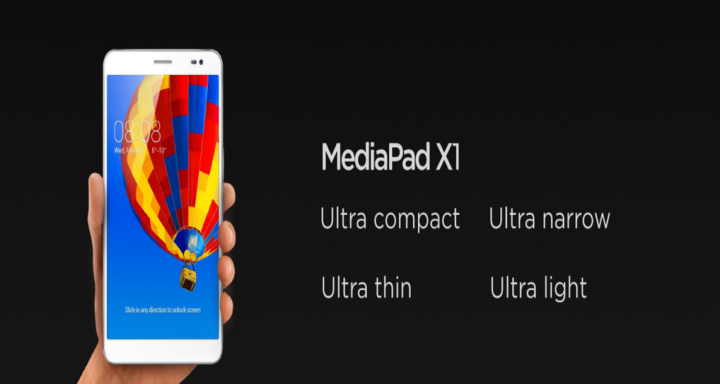
Despite starting off its Mobile World Congress 2014 showing in a rather traditional way – showing off a phone and tablet – things quickly got weird at the Huawei conference. The China-based phone maker has always been happy to make big screened devices, but it broke new ground today.
Introduced by discussing the madness of the mobile market – “Phones are getting bigger, tablets are getting smaller” – the MediaPad X1 meets at the intersection of shrinking tablets and growing phones to offer something only Asus has dared try: A 7-inch tablet capable of making phone calls. Or a 7-inch smartphone the size of a tablet, depending on your point of view.
The X1 is “ultra-compact, ultra-slim, and also ultra-thin and ultra-light,” according to Huawei CEO Richard Yu. It has a thin 3mm bezel, is 7.8mm thick, and weighs 239g, making it thinner and lighter than the iPad or Nexus 7. Laser-etched wires and an engineering technique called “no ledge structure” were required to make the device capable of being so thin and weightless. Given the thinness of the device, a feature called “intelligent grip suppression” allows you to grip the screen with a thumb and the X1 will ignore the input.
The X1 has a 1,920 x 1,200 pixel resolution screen, which equates to 323 pixels on every inch of the display. Equipped with the cameras one would expect on a smartphone, the X1 has a 5-megapixel lens on the front and 13-megapixel lens on the back. The X1 is powered by a 1.6GHz HiSilicon 910 SoC central processor with an ARM Mali-450 GPU, 2GB RAM, 16GB internal storage and is kept going with a 5,000mAh battery. The battery is capable of reverse charging so you can use the X1 to charge your other devices, not that you’d need another tablet and phone since the X1 is both. As one would expect for a smartphone, it is 4G LTE enabled.
No word on availability was made for the MediaPad X1, but Huawei did announce a price point at the end of its show. The X1 will be available for 400 EUR, which comes to about $550 USD. All things considered, that isn’t a bad price. We just have no idea if anyone wants to take calls on a phone the size of a Nexus 7 or Kindle Fire.



